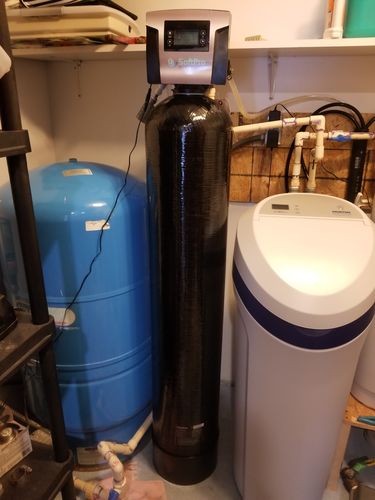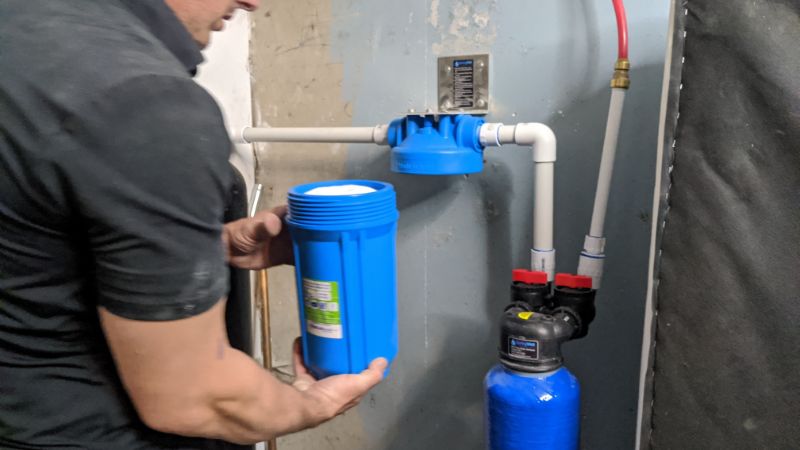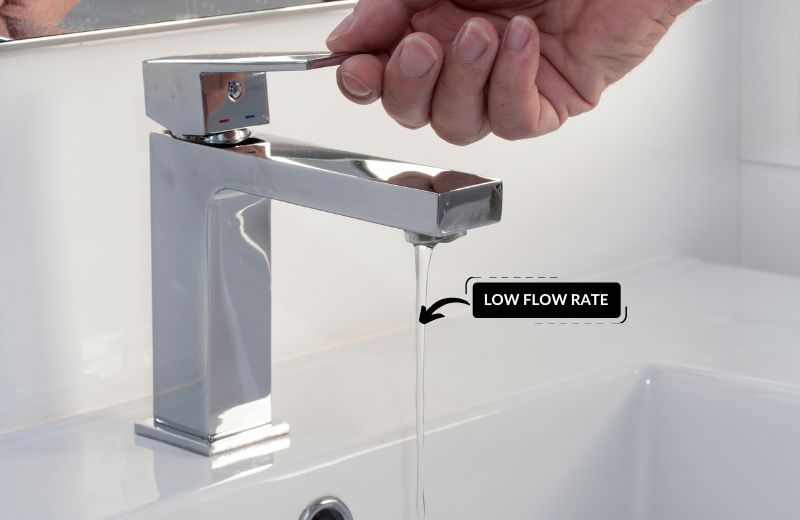Whole house water filters can make a huge difference to your water quality – but that’s only when you’ve got the challenge of installation out of the way.
You might know that these filters need to be installed as close as possible to water’s entry point into your home – but what if you have a pressure tank? Should your filter be installed before or after this tank?
📖 TL;DR
Whole house water filtration systems can be installed either before or after a pressure tank, as long as the correct measures are taken.
Looking for a more detailed answer? Read on.
Note: a pressure tank or pressure pump is often installed in homes with low or unstable water pressure, and is used to provide consistently high water pressure so that appliances can operate properly.
Table of Contents
🚰 Should a Whole House Water Filter Be Installed Before or After a Pressure Tank?
There are pros to installing a whole house water filter before and after a water pressure tank, but some systems are better suited to specific locations.
If you choose to install a whole house water treatment system upstream of the pressure tank, it’ll mean that only clean, filtered water travels through the tank. This helps to protect the lifespan of the tank’s components, especially the pressure switch, from sediment damage.

Installing a filter system before the pressure tank also means that, if the filter reduces water pressure, the pressure tank will boost this pressure and ensure that water travels through your home at a fast enough rate.
However, this could be a problem as well as a benefit. If your water’s pressure is already low, installing a water filter before your pressure tank could mean one of two things:
- Your water pressure decreases so much that the pump ends up running continuously (this can be resolved by installing a second cutout pressure switch)
- Your water pressure is too low for water to pass through all the filter stages in the system, leading to clogging
Plus, some people say that reducing sediment isn’t necessary because pressure tanks aren’t damaged by sediment. In a captive-air pressure tank, the collected sediment can simply be drained out of the bottom of the tank from the valve.
So what does this mean? You can install your whole house water filter before or after the pressure tank. Some water filters are best installed before pressure tanks, while others are best installed after.
📰 Different Types of Water Filters and Where to Install Them
Let’s take a look at the most common point of entry water treatment systems, and where you should ideally install them.
Sediment Filters
Whether or not a sediment filter does much to protect a pressure tank and pressure switch is up for debate. Still, to stay on the safe side, there’s no harm in installing a sediment filter before the pressure tank.
Sediment filters should be installed before any appliance or filtration system in your home, including your well pump, water heaters, and all other water filters or softeners.
These filters are less likely to be affected by water flow because their filter media is designed to remove large particles of sediment, so it won’t become clogged as easily as a filter with tiny pores.
If you use several pressure tanks and water filters, install shut-off valves between each system, allowing you to switch off the water supply to a particular system if needed.

Iron Removal Filters
If you have reddish-brown well water, you likely have an iron issue. An iron removal filtration system addresses this issue.
An iron filter needs a good supply of water to properly backwash automatically. For this reason, it’s best to install an iron filter downstream of the pressure tank so the system works properly.
Installing an iron filter before the pressure pump simply wouldn’t make sense. The well pump wouldn’t be activated because the pressure switch is on the opposite end of the pressure tank.
Plus, installing an iron filter before the pressure tank could result in water flowing back through the system due to a lack of pressure.
Multi-Stage Filter Systems
Multi-stage water filters have got a lot going on, so in most cases, they should be installed before the pressure tank.
A clogged water filter system will significantly decrease water’s flow rate, so the pressure tank and water pump will end up working double-time to make up for it. A continuously running pressure pump isn’t only expensive; it’ll also wear out the pump motor, requiring it to be changed frequently.
The short answer? Most multi-stage filter systems should be installed before the pressure tank.

Water Softener Systems
Water softeners aren’t technically water filters, but you might still want to know where these water treatment systems should be located on your waterline.
A water softener shouldn’t be installed before the pressure tank. Because of its small inlet pipes and high likelihood of clogging with poor flow, it’s essential that a water softener is installed after the pressure switch.
Like iron removal filters, water softeners need to backwash during the regeneration process. When a softening system is installed after a pressure tank, it’s able to work properly, and overall pressure in your water supply will be maintained.
To prevent a softener from shutting down your entire supply system, install it downstream of the pressure switch.
